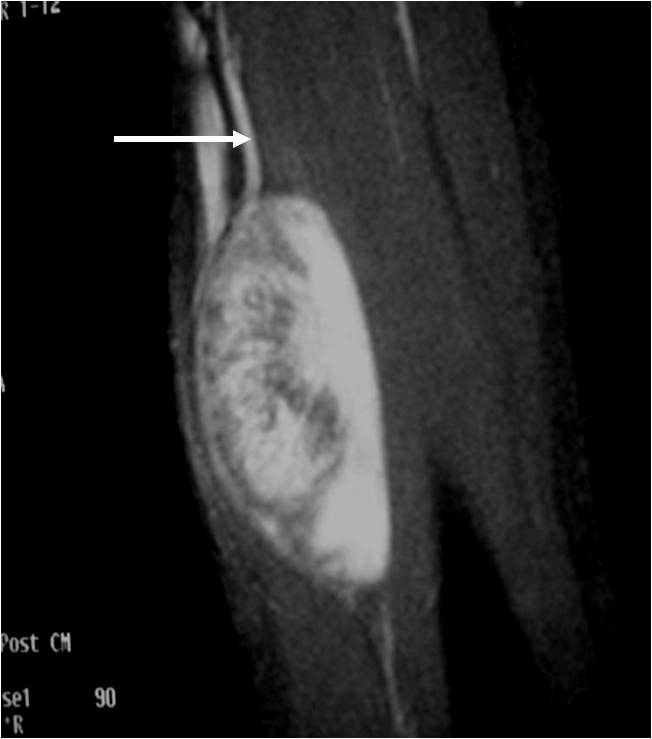What is a Chordoma?
Chordoma is a slow growing, malignant (cancerous) bone tumor. It is a very rare bone sarcoma, or cancerous tumor, that commonly affects the ends of the spine, including the base of the skull and sacrum. Without treatment, chordomas can metastasize, or spread, throughout the body.
Who is usually affected?
- • Most common in the adult population of 40-70 years old
- • More common in males (2:1)
- • Less than 5% of cases occur in children, but still possible
- • Rare bone sarcoma (accounts for 1-4% of bone malignancies)
Causes
- • There is no known cause of Chordoma. They are not passed down to children (non-hereditary) and have no risk factors.
Common Bones Involved
- • Base of skull
- • Spine
- • Sacrum
- • Coccyx
- • Can metastasize to other parts of the body
Signs and Symptoms
- • Small growing mass
- • At the base of the skull, headaches are common
- • In the spine, back pain, weakness, numbness, and tingling are common
- • In the sacrum/coccyx, pain and constipation are common
Biological Behavior
- • Chordomas develop from remaining cells of the notochord, which help form the spine during early fetal development. The notochord is the embryonic tissue that forms the discs in the spine during development as an embryo.
- • Locally aggressive tumor with high rate of local recurrence.
- • Due to its location on axial skeleton, vital structures may be affected causing death.
- • Local recurrences are common and is the most important predictor of mortality.
- • Extensive resection may be the most determining factor in affording an opportunity to cure.
- • 65% metastasis rate with metastasis to the lungs, bone, skin, and brain.
Diagnosis
- • The work-up for Chordoma often consists of a physical examination, X-ray, MRI, and CT scans. Bone scan is used to detect spread to other bones. CT chest, abdomen and pelvis evaluates spread to lungs and liver or other organs. The diagnosis is often confirmed with a biopsy, which samples the tumor for further analysis.
Risk to your limbs
Localized pain and the presence of a mass can indicate the presence of a chordoma. Chordomas are slow growing, cancerous tumors that have the ability to spread to other parts of the body if not treated.
Radiographic imaging is used to help form a diagnosis of Chordoma. These include X-Ray, MRI, CT and Bone Scans.
An example of an X-ray is shown.

Treatment of Chordoma
Chordomas are difficult to treat due to the location of where they commonly occur, however, radiation and a wide en bloc resection surgery are often used to treat chordoma. Additionally, this type of surgery may reduced the risk of the tumor coming back (recurrence). Extensive curettage and cryosurgery may also be used to treat chordomas intraoperatively.
Surgery

Surgical treatment includes wide or radical resections to remove the complete tumor and additional margins. The removal of additional, surrounding margins ensures that the tumor is completely removed and decreases the chances of the tumor coming back.
Cryosurgery & Curettage

Intralesional Curettage means to scoop the tumor out using a spoon-like tool called a curette. This is a surgery that aims to remove the mass and restore the bone so that the patient can get back to normal function. The ABC is identified within the bone and scooped, or curetted, out. The cavity is then shaved down with a Midas Rex Drill, which is similar to a dental drill. This drill removes more tumor cells. It is a specialized technique that only a handful of surgeons in the country know how to perform. Once the tumor is removed, liquid nitrogen may be poured into the bone cavity to freeze the area to sub zero temperatures in order to kill microscopic tumor cells. This reduces the chances of the tumor coming back to less than 5%. Warm fluid is also used to prevent normal tissues from freezing.
Radiation

Radiation is a treatment option for some cancers. Radiation therapy is a localized treatment that utilizes high-energy particles or waves to kill cancerous cells. Because radiation therapy is a localized treatment, it only affects the area in which it is set to target and therefore eliminates the risks of damaging healthy cells throughout the body. Not only is it used to treat cancer, but it can also decrease the chances of the cancer from recurring. Lastly, radiation may be used in conjunction with other treatments, such as surgery or chemotherapy, to treat cancers.






